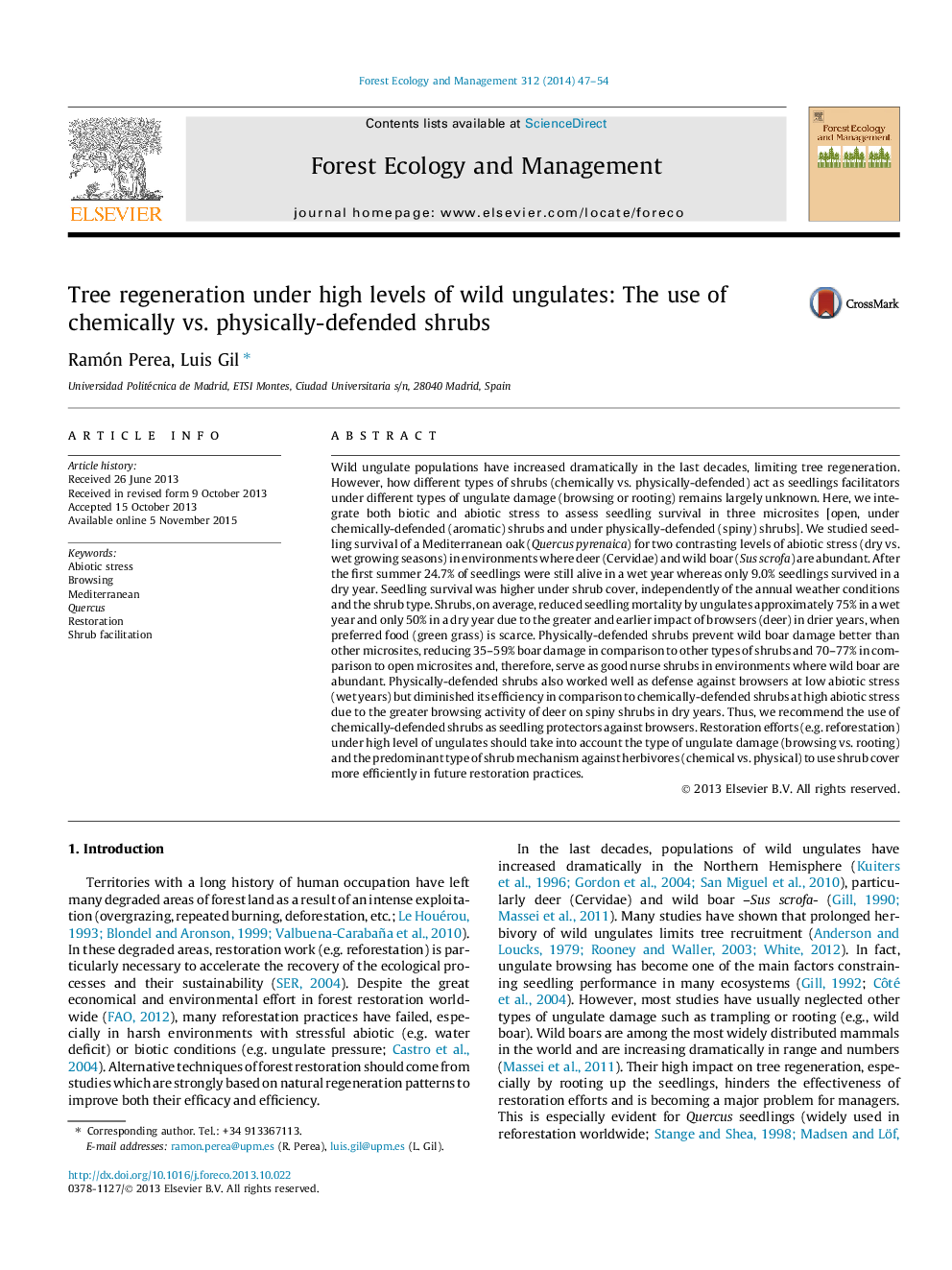| کد مقاله | کد نشریه | سال انتشار | مقاله انگلیسی | نسخه تمام متن |
|---|---|---|---|---|
| 86772 | 159211 | 2014 | 8 صفحه PDF | دانلود رایگان |
• We integrate biotic and abiotic stress to assess seedling survival in 3 microsites.
• Survival was higher under shrubs regardless annual weather and shrub type.
• Physically-defended shrubs prevent wild boar damage better than other microsites.
• Chemically-defended shrubs worked better as protectors against browsers.
• Managers should account for the type of ungulate damage and the shrub mechanism.
Wild ungulate populations have increased dramatically in the last decades, limiting tree regeneration. However, how different types of shrubs (chemically vs. physically-defended) act as seedlings facilitators under different types of ungulate damage (browsing or rooting) remains largely unknown. Here, we integrate both biotic and abiotic stress to assess seedling survival in three microsites [open, under chemically-defended (aromatic) shrubs and under physically-defended (spiny) shrubs]. We studied seedling survival of a Mediterranean oak (Quercus pyrenaica) for two contrasting levels of abiotic stress (dry vs. wet growing seasons) in environments where deer (Cervidae) and wild boar (Sus scrofa) are abundant. After the first summer 24.7% of seedlings were still alive in a wet year whereas only 9.0% seedlings survived in a dry year. Seedling survival was higher under shrub cover, independently of the annual weather conditions and the shrub type. Shrubs, on average, reduced seedling mortality by ungulates approximately 75% in a wet year and only 50% in a dry year due to the greater and earlier impact of browsers (deer) in drier years, when preferred food (green grass) is scarce. Physically-defended shrubs prevent wild boar damage better than other microsites, reducing 35–59% boar damage in comparison to other types of shrubs and 70–77% in comparison to open microsites and, therefore, serve as good nurse shrubs in environments where wild boar are abundant. Physically-defended shrubs also worked well as defense against browsers at low abiotic stress (wet years) but diminished its efficiency in comparison to chemically-defended shrubs at high abiotic stress due to the greater browsing activity of deer on spiny shrubs in dry years. Thus, we recommend the use of chemically-defended shrubs as seedling protectors against browsers. Restoration efforts (e.g. reforestation) under high level of ungulates should take into account the type of ungulate damage (browsing vs. rooting) and the predominant type of shrub mechanism against herbivores (chemical vs. physical) to use shrub cover more efficiently in future restoration practices.
Journal: Forest Ecology and Management - Volume 312, 15 January 2014, Pages 47–54
